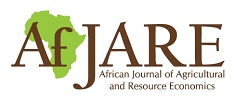Is cowpea a ‘women’s crop’ in Mali? Implications for value chain development
Melinda Smale, Veronique Theriault, Andrea Allen, & Mamadou Sissoko
Abstract
Cowpea, which is produced primarily in West Africa, is valued locally for its agronomic benefits in dryland farming, nutritional content, and contribution to the livelihoods of farming families. Many feel that more investment in cowpea research and development is needed for the crop to achieve its economic potential. Cowpea has long been labelled a ‘women’s crop’. We tested whether this is the case in Mali by exploring five indicators with a combination of primary and secondary databases, and interpreting our results in the context of the regional literature. We conclude that, in Mali, cowpea is better characterised as a ‘women’s enterprise’. Men are more likely than women to plant cowpea as either a primary or secondary crop and tend to plant larger areas, with cowpea intercropped. In drier agro-ecologies, women are more likely to grow cowpea than other crops. Although subsample sizes are very small, women cowpea growers appear to earn more on average from selling the harvest from their individual plots than do men. Women represent 99% of traders of
processed cowpea products in the open-air markets we surveyed. In the production segment of the value chain, investments to facilitate women’s access to improved cowpea seed and local markets would support their commercial orientation. Investments in women’s trade in processed cowpea products, including the provision of credit, storage, and training in organisational capacity, would enhance their incomes and their livelihoods.
